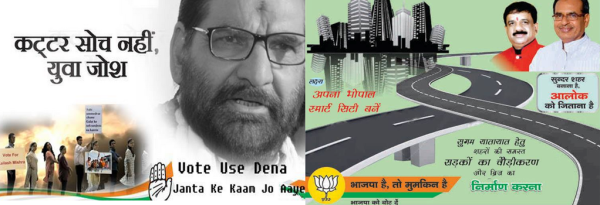Niharika Jindal, Associate Strategist, Funding and Collaboration Team, Dasra and Akanksha Malhautra working with development of research reports with Dasra
Philanthropy in India is driven by visuals. When asked why they give, many compassionate individuals speak about what they see: “When I saw the little children asking for food at a signal light…” “When I see that the person who cleans my house doesn’t have proper shoes to wear”. There is so much poverty around that for many givers the instinct is to give where direct results can be seen quickly. It is simpler to send a child to school than to support an organization that monitors the implementation of the Right to Education Act on the ground and provides practical policy recommendations. However, the latter, if done well, has the potential to send not one but millions of children to school and on the path towards viable livelihoods. Though the reasons for philanthropy are very private and personal, India needs philanthropists to think about mobilizing a wider change; and the one roadblock that hampers progress in almost every development sector is governance.
The challenges associated with urban governance are the perfect example for this. While India’s geography is largely rural, the country is urbanizing at a rapid rate on the back of accelerated privatization, a surging service economy and infrastructure growth, which have expanded job opportunities, disposable incomes, and ultimately, aspirations. India’s urban areas are witnessing a population explosion. The urban population added 91 million people—more than the populations of Germany or Egypt—in the decade ending in 2011 and grew 2.5 times faster than in rural areas. Currently, the country is severely underprepared for this transition.
According to an expert committee constituted by the Ministry of Urban Development, Indian cities will need over INR 50 lakh crore to meet their infrastructure needs over the next 20 years. During 2007-2008, Urban Local Body revenues were barely INR 50,000 crore across the country, accounting for less than 1% of GDP, compared to over 6% in South Africa and over 7% in Brazil, two comparable developing countries.
The quality of life issues faced by urban citizens – garbage, traffic, pollution, sanitation – are symptoms of deep-rooted problems of governance within our city-systems. Addressing those problems would need an amalgam of top-down policy changes and bottom-up solutions. Take India’s waste management problem as an example – we have complications at the collection stage, transfer stage and disposal stage – each comes with its own requirement for human resources, accountability and inter-agency coordination. However, none of India’s premier educational institutions have had urban planning as a core subject until 2002 – which partly explains our significant deficits in the know-how and capacity needed to plug these gaps.
The word ‘governance’ is often synonymously used to mean government. Governance refers to any process or institution that helps manage and mobilize public services and resources efficiently for the public good. It includes independent media, free and fair elections, an uncompromising and non-discriminatory judicial system, inclusive and progressive policies, a conducive environment for private sector development, and a lot more.
The government is an integral part of governance and the onus of improving governance relies equally on all stakeholders: citizens, state, market, civil society, and media. While non-profits and social organizations play their part to address complex issues of education, healthcare, livelihoods, human rights and other critical components of India’s development; governance cuts across all these areas. Neglecting the urgent need to support organizations that strengthen governance would be a huge error.
Owing to a lack of deep understanding of governance and its implications, the very word makes most Indians wince. Many organized funders stay away from funding governance because of the risks and negative connotations associated with it – it’s often perceived as being political and messy. This is despite the fact that most non-profit organizations working to improve governance aim to work with government rather than counter to it.
The funding landscape in India is changing and the window for foreign money is narrowing. Domestic funding has a large gap to plug. The perceived risk of backlash from government is a big deterrent for most corporates when it comes to investing in organizations that address governance in India. This increases the criticality of philanthropists coming forward to help create much needed change.
Dasra has launched a collaborative platform called the Governance Collaborative Fund, which informs and encourages giving to the issue and also helps to diversify risk. The fund will support fifteen to twenty leading organizations over the next five years by providing substantial funds and capacity building support, with an emphasis on investing in institution building and managerial resources. From philanthropists, we require more than just funds – their personal influence, networks and engagement are equally valuable to really ensure that we see impact. Dasra research titled Good to Great: Taking the Governance Leap in India evaluates India’s governance status, and provide solutions that can be led by all stakeholder groups—philanthropists, the private sector, private citizens and non-profits.
Better governance requires a movement that today’s philanthropists need to be a part of. It might take several decades to see change, and may be that only our children will see the results, but if we don’t act now, the big and small picture of poverty in India will remain largely frozen in time.
 Niharika Jindal works for strategic marketing within the funding and relationships team at Dasra
Niharika Jindal works for strategic marketing within the funding and relationships team at Dasra

Akanksha Malhautra leads the development of research reports to inform philanthropic giving in India across Dasra’s four focus areas: Philanthropy; Governance; WASH and RMNCH+A






